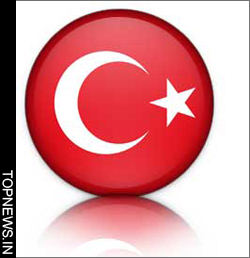Temple in Turkey sheds light on so-called ‘Dark Age’
 Toronto, April 16 : A remarkably well-preserved monumental temple in Turkey, believed to be constructed during the time of King Solomon in the 10th/9th-centuries BC, is shedding light on the so-called Dark Age.
Toronto, April 16 : A remarkably well-preserved monumental temple in Turkey, believed to be constructed during the time of King Solomon in the 10th/9th-centuries BC, is shedding light on the so-called Dark Age.
Uncovered by the University of Toronto's Tayinat Archaeological Project (TAP) in the summer of 2008, the discovery casts doubt upon the traditional view that the transition from the Late Bronze Age to the Early Iron Age was violent, sudden and culturally disruptive.
Ancient sources, such as the Homeric epics and the Hebrew Bible, depict an era of widespread famine, ethnic conflict and population movement, most famously including the migrations of the Sea Peoples (or biblical Philistines) and the Israelites.
This is thought to have precipitated a prolonged Dark Age marked by cultural decline and ethnic strife during the early centuries of the Iron Age.
But, recent discoveries - including the Tayinat excavations - have revealed that some ruling dynasties survived the collapse of the great Bronze Age powers.
"Our ongoing excavations have not only begun to uncover extensive remains from this Dark Age, but the emerging archaeological picture suggests that during this period Tayinat was the capital of a powerful kingdom, the `Land of Palastin'," said Timothy Harrison, professor of Near Eastern Archaeology at the University of Toronto and the director of the project.
"Intriguingly, the early Iron Age settlement at Tayinat shows evidence of strong cultural connections, if not the direct presence of foreign settlers, from the Aegean world, the traditional homeland of the Sea Peoples," he added.
Excavations uncovered the temple's southern approach, which once faced a broad stone-paved courtyard, and consisted of a monumental staircase and porticoed-entrance, supported by a large, ornately carved basalt column base.
In addition, fragments of monumental stelae - stone slabs created for religious or other commemorative purposes - carved in Luwian (an extinct language once spoken in what is now Turkey) hieroglyphic script, were found.
They are thought to have once stood on stone platforms in the courtyard.
"The building's central room was burned in an intense fire. It was filled with heavily charred brick and wood, as well as a substantial quantity of bronze metal, including riveted pieces and carved ivory fragments - clearly the remains of furniture or wall fixings. Fragments of gold and silver foil were also found along with the carved eye inlay from a human figure," said Harrison.
The temple's inner sanctuary will be the focus of the 2009 field season which begins on July 1. (ANI)